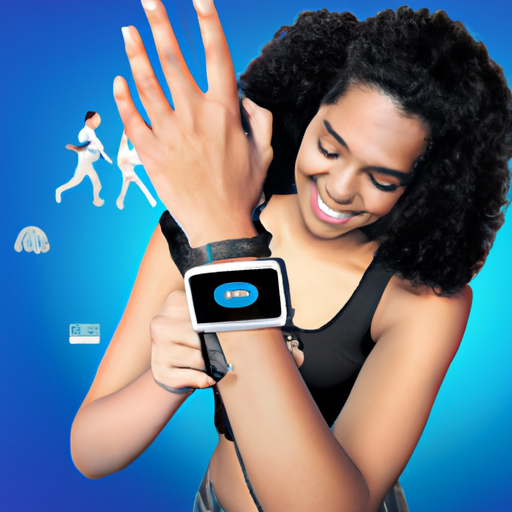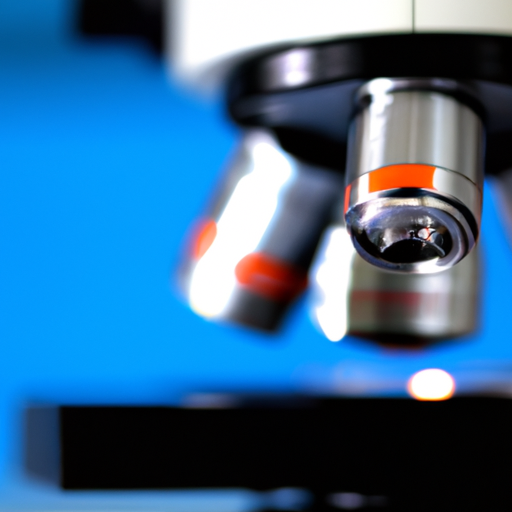Imagine a world where your clothes can do more than just keep you warm or stylish. A world where technology seamlessly integrates into our everyday lives, enhancing our experiences and making our lives easier. This is the world of wearable tech, a rapidly growing industry that is revolutionizing the way we interact with our surroundings. From smartwatches that track our steps and heart rate, to augmented reality glasses that overlay digital information onto our field of vision, wearable tech is transforming the way we live, work, and play. In this article, we will explore the exciting advancements in wearable tech and how they are shaping the future of technology.
What is Wearable Tech?
Definition
Wearable tech, also known as wearable devices or gadgets, refers to a category of electronic devices that can be worn on the body, typically as accessories or clothing. These devices incorporate advanced technologies, such as sensors, connectivity features, and data interpretation capabilities, to collect and analyze data, perform various functions, and enhance the user’s overall experience.
Examples
The market for wearable tech has grown rapidly over the years, with numerous exciting examples available. Fitness trackers, such as Fitbit and Garmin, are popular wearable devices that monitor activities like steps taken, heart rate, sleep patterns, and calories burned. Smartwatches, such as Apple Watch and Samsung Galaxy Watch, offer features like call and message notifications, health tracking, music playback, and even contactless payments. Smart glasses, like Google Glass and Microsoft HoloLens, allow users to overlay digital information onto their real-world view. Lastly, smart clothing, such as Sensoria’s smart socks or Hexoskin’s smart shirts, integrate sensors and fabric technology to track biometrics like heart rate and breathing during exercise.
Benefits
Wearable tech offers a range of benefits to its users. One of the major advantages is the ability to track and monitor health and fitness data conveniently. Fitness trackers and smartwatches allow individuals to keep tabs on their physical activity levels, receive insights about their sleep patterns, and even manage stress through guided breathing exercises. This data-driven approach to health and fitness encourages individuals to make positive lifestyle changes, leading to improved overall well-being. Moreover, wearable tech enhances productivity and efficiency by providing instant access to notifications, reminders, and even voice assistants, allowing individuals to easily stay organized and stay connected. Additionally, wearable tech can enhance entertainment experiences, such as gaming with virtual reality headsets or accessing immersive media through augmented reality.
Different Types of Wearable Tech
Fitness Trackers
Fitness trackers, also known as activity trackers, are devices designed to monitor and collect data related to physical activities and health metrics. These devices typically come in the form of wristbands or clips and are equipped with sensors, including accelerometers, heart rate monitors, and sometimes even GPS capabilities. Fitness trackers can accurately record steps taken, distance traveled, calories burned, and sleep patterns, helping users monitor their progress towards fitness goals and make informed decisions about their health.
Smartwatches
Smartwatches are wrist-worn devices that combine the functionalities of a traditional watch with advanced features found in smartphones. Apart from telling the time, smartwatches offer a range of capabilities, including call and message notifications, fitness tracking, music playback, and even contactless payment options. With a connected smartphone, users can access various apps, receive real-time updates, and conveniently perform tasks on a smaller, portable device.

Smart Glasses
Smart glasses are wearable devices that resemble regular eyeglasses but come with integrated displays, sensors, and connectivity features. These glasses allow users to overlay digital information onto their field of vision, providing a hands-free and immersive augmented reality experience. From displaying navigation directions to providing real-time information about products or landmarks, smart glasses offer a new way to interact with the world and access valuable information.
Smart Clothing
Smart clothing blends fashion with technology by incorporating sensors, conductive fibers, and other electronic components directly into garments. This integration allows for various functionalities, such as monitoring biometric data, tracking movement, or even changing the color or texture of the fabric. Smart clothing is designed to be comfortable and stylish while offering additional features and benefits that traditional clothing cannot provide.
How Does Wearable Tech Work?
Sensors and Data Collection
Wearable tech devices rely on sensors to collect specific data related to their intended purpose. For fitness trackers, this can include accelerometers to measure movement, heart rate monitors to track pulse, and GPS modules to record location. Smart glasses may include sensors like gyroscopes, accelerometers, and cameras to capture and interpret the user’s surrounding environment. These sensors collect data in real-time and transmit it to the device for further processing.
Connectivity
Once data is collected, wearable devices utilize wireless connectivity options like Bluetooth or Wi-Fi to transfer information to smartphones, tablets, or other devices for storage, analysis, or display. This connectivity allows for seamless integration with other devices and enables users to access their data anytime, anywhere. By connecting to the internet, wearable devices can also access cloud-based services or receive updates and notifications.
Data Interpretation and Analysis
Wearable tech platforms or companion apps play a crucial role in interpreting and analyzing the collected data. These applications process the raw data and present meaningful insights to users through easy-to-understand visualizations. For example, a fitness tracker app may display the number of steps taken, calories burned, and sleep quality, allowing users to track their progress towards fitness goals. The ability to interpret and analyze data effectively enhances the user’s understanding and motivates them to make positive changes in their lifestyle and habits.
Applications of Wearable Tech
Health and Fitness
Wearable tech has revolutionized the health and fitness industry by empowering individuals to take control of their well-being. Fitness trackers provide real-time feedback on various metrics, enabling users to monitor their activity levels, heart rate, and sleep patterns. With this information, individuals can set goals, track progress, and make informed decisions about their health, leading to increased physical activity, improved sleep quality, and overall better health.
Productivity and Efficiency
Wearable tech devices like smartwatches aid in boosting productivity and efficiency by providing quick access to essential information, notifications, and reminders directly on the wrist. Users can manage their calendars, read and reply to messages or emails, check weather forecasts, and even access voice assistants, all without the need to pull out their smartphones. This seamless integration and instant access to information enable users to stay organized, save time, and multitask effectively.
Safety and Security
Wearable tech can enhance personal safety and security through various features. For example, some smartwatches and fitness trackers offer built-in GPS capabilities, allowing users to share their location in emergency situations. This can be especially helpful for outdoor enthusiasts or individuals who frequently travel alone. Additionally, some wearable devices, such as personal safety alarms or panic buttons, enable quick and discreet alerts to be sent to designated contacts or emergency services when needed, providing peace of mind and increasing personal safety.
Entertainment and Gaming
Wearable tech contributes to the entertainment industry by providing immersive experiences and innovative gaming options. Virtual reality headsets transport users to virtual worlds, allowing them to explore and interact with their surroundings in a highly immersive way. Augmented reality glasses offer overlayed digital information onto the real world, providing unique gaming experiences or enhancing activities like sightseeing or museum visits. Wearable tech in gaming offers new levels of engagement and excitement, making it a popular choice among technology enthusiasts.
Challenges and Concerns with Wearable Tech
Privacy and Data Security
As wearable tech devices collect personal data, privacy and data security concerns arise. Users may worry about their sensitive health information or location tracking being accessed or exploited. Wearable tech manufacturers must prioritize robust security measures to protect user data from unauthorized access and ensure encryption protocols are in place when transmitting information. Educating users about privacy settings and providing transparent data usage policies can also help mitigate concerns and build trust.
Ethical Considerations
While wearable tech offers numerous benefits, ethical considerations must be taken into account. For instance, the use of wearable tech in workplace environments raises questions about employee privacy and consent. Employers must establish clear policies regarding the use of employee data and ensure that the use of wearable devices does not infringe upon personal privacy rights. Similarly, sharing personal health data with healthcare providers or insurance companies raises concerns about potential discrimination or misuse of the data.
Compatibility and Integration
Wearable tech devices need to be compatible and seamlessly integrate with other devices and platforms to provide a cohesive user experience. Users may encounter challenges if their device is not compatible with the operating system of their smartphone or if they face connectivity issues. Manufacturers should strive for cross-platform compatibility and provide regular firmware updates to ensure ongoing functionality and compatibility with evolving technology standards.
User Adoption and Acceptance
One of the key challenges for wearable tech is user adoption and acceptance. Some individuals may hesitate to embrace wearable devices due to concerns about privacy, data security, or simply discomfort with wearing technology. Manufacturers can address these challenges by developing devices that are aesthetically pleasing, comfortable to wear, and easy to use. Offering personalized experiences, robust customer support, and clear user benefits can also encourage users to adopt wearable tech as part of their daily lives.
Future Trends in Wearable Tech
Augmented Reality and Virtual Reality Integration
The integration of augmented reality (AR) and virtual reality (VR) into wearable tech holds immense potential for the future. Augmented reality glasses with improved optics and processing power can offer a more seamless and immersive overlay of digital information onto the real world. Virtual reality headsets with enhanced graphics and motion tracking capabilities can provide even more realistic and interactive virtual experiences. The integration of AR and VR into wearable devices will lead to advancements in entertainment, education, training, and various industries, unlocking new possibilities for human-computer interaction.
Advanced Biometric Sensors
As technology advances, wearable tech will see the incorporation of advanced biometric sensors capable of collecting even more precise and diverse data about the human body. From blood pressure and oxygen saturation sensors to ECG and EEG sensors, these devices will offer detailed insights into an individual’s health and well-being. This data can aid in the early detection of health issues, personalized healthcare recommendations, and remote patient monitoring, leading to improved healthcare outcomes and preventive care.
Healthcare and Medical Applications
The healthcare industry is increasingly embracing wearable tech for various applications. Wearable devices can monitor vital signs, track medication adherence, and serve as remote patient monitoring tools, enabling healthcare professionals to have real-time access to their patients’ health data. These devices can also facilitate telemedicine, allowing doctors to remotely diagnose and treat patients, especially in areas with limited access to healthcare services. The integration of wearable tech and healthcare will lead to personalized medicine, improved patient engagement, and more efficient healthcare delivery.
Fashion and Style Innovations
Wearable tech devices have often been criticized for their lack of aesthetics or style. However, as technology miniaturizes and fashion merges with technology, wearable tech will become more seamlessly integrated into everyday clothing and accessories. Fashion designers are already exploring the incorporation of wearable tech elements into clothing, creating items that are both functional and fashionable. This fusion of fashion and technology will make wearable devices more appealing and accessible to a wider audience, encouraging adoption and integration into daily routines.
In conclusion, wearable tech has become an integral part of our lives, providing us with convenient access to information, enhancing our health and fitness journeys, and offering new dimensions of entertainment and engagement. While there are challenges and concerns to address, the future looks promising with advancements in augmented reality, biometric sensors, healthcare applications, and fashion innovations. As wearable tech continues to evolve, it will undoubtedly find its way into various aspects of our lives, enhancing and enriching our experiences in countless ways.



